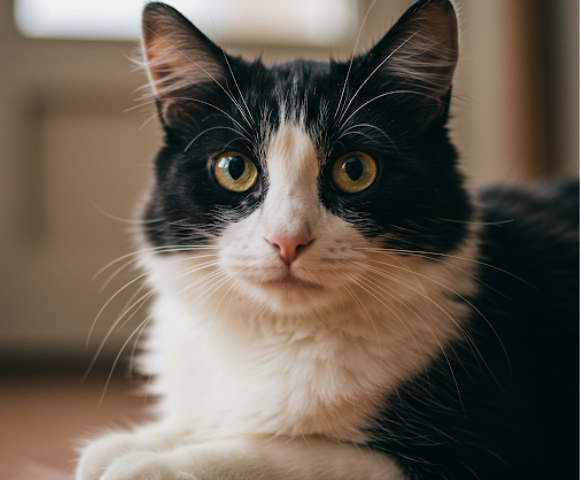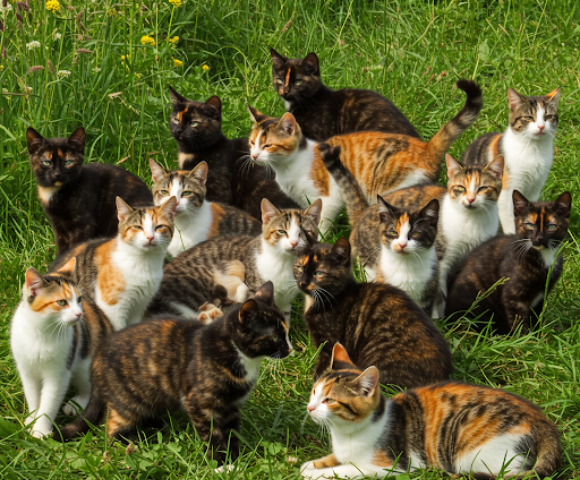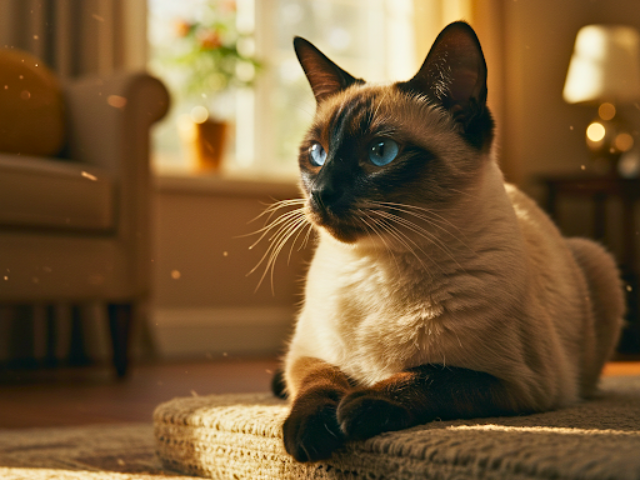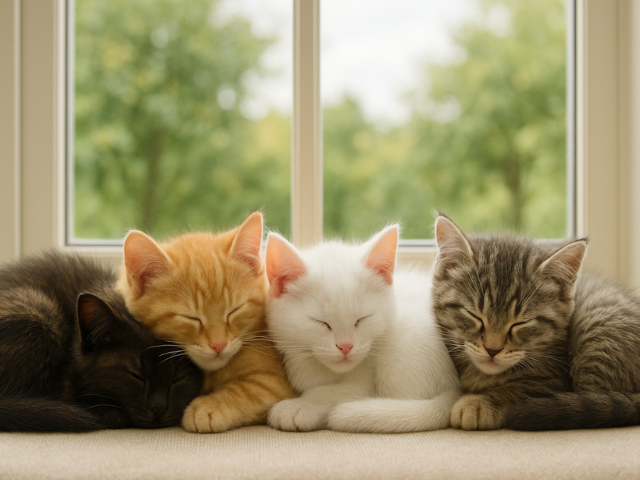You see your mama cat curled up with her brand-new babies. As you look closer, you see a rainbow of tiny furballs—a little black one, a striped tabby, a calico cutie, and maybe even a fluffy orange puff. So you ask yourself, why do cats have different colored kittens?
The answer lies in their genetics, parts of the DNA in cells that tell their bodies what color their fur should be. Want to know more? Read on to find out how these genetic instructions work, how mom and dad each pitch in their part, and the fascinating science behind those unique patterns and shades you see.

To understand kitten colors, we first need to look at the basics of genetics. Genetics are biological instructions that shape a living creature and define its traits.
Almost every cell of a cat’s body has tiny structures called chromosomes. These chromosomes hold all the genetic information. A kitten gets sets of genes from its parents, one from its mother and another from its father.
On these chromosomes are even smaller sections called genes. Each gene holds the particular instruction for a specific trait, like eye color, tail length, or, you guessed it, fur color! Because kittens get chromosomes from both parents, they end up with two copies of most genes—one from mom and one from dad. This pairing of genes forms the basis for a kitten’s fur color.
It’s where things get interesting. When a kitten inherits genes from both parents, the combination determines the coat color it will show. So, if a mom cat gives a gene for black fur and a dad cat for orange fur, the kitten’s color depends on how these specific gene versions interact. Sometimes, one version of a gene is more active than the other version.
Genes have two types: dominant and recessive. A dominant gene causes its trait to appear even if the kitten inherits only one copy of its version. The instructions from the dominant gene overshadow the ones from the recessive gene it’s paired with.
A recessive gene version is different. Its trait will only appear if the kitten inherits two copies of that specific recessive version, one from each parent. If a dominant version turns up, the recessive trait stays hidden.
For example, the genetic makeup for basic black fur color is more prevalent than the gene for lighter brown shades like chocolate or cinnamon. The gene that allows tabby stripes to show (called Agouti) is dominant over the gene that makes a cat solid-colored (non-agouti). This genetic interaction is why cats have different color kittens within the same litter.
While many genes influence a cat’s appearance, a few key players determine the basic coat colors.
This gene is responsible for eumelanin production, the pigment that gives black and brown colors. The B gene creates black color, while the recessive genes, like b and bl, produce chocolate and cinnamon colors, respectively. A kitten needs two copies of the recessive versions to show those lighter brown shades.
This gene is unique since you can find it in the X chromosome (we’ll talk more about this later!). It controls phaeomelanin production, the pigment for red and orange colors.
The dominant version (O) instructs cells to produce orange pigment, overriding black or brown pigment instructions. The recessive version (o) allows the black/brown gene to show through. That’s why some cats have orange fur, tabby, tortie, or calico patterns.
Understanding these basic genetic concepts helps us see how kittens get their coat color, leading to the diverse appearances seen in kittens.

When a kitten is born, it’s due to the genetic mixture. Each parent passes down half of their genetic instructions, and the unique combination creates each kitten’s look.
A mother cat and a father cat each have two copies of every gene—each randomly gives one copy of each gene to their kittens. Even if both parents are black, they can still carry a hidden gene for another color. So don’t be surprised if you see brown, gray, or orange kittens in the same litter.
Cats can carry genes for colors they don’t show themselves. For example, a black cat might have a hidden orange or white spotting gene. If both parents pass on the right combination, these hidden colors can appear in their kittens.
Sometimes, a group of kittens can have more than one father, a phenomenon called heteropaternal superfecundation. If a female cat mates with several males during her heat cycle, her kittens can have different dads, adding more variety to the colors and patterns in a single litter.

Even with the same set of parents, each kitten has a one-of-a-kind genetic makeup that creates endless variety in coat color and pattern.
When a cat makes eggs or sperm, its genes mix up—this process is called meiosis. Some parts of DNA cross over during this process, so each gamete is unique.
When two unique gametes come together, they create a kitten with a new combination of traits. So, even if the offspring have the same parents, they can still have different looks.
Cats have two sex chromosomes: X and Y. Females are XX, and males are XY. The orange, or O-locus, gene is on the X chromosome. Male kittens get only one X. So, if that X carries orange, the kitten will be orange or cream.
Females get two Xs, so they can be half orange and half black—creating tortoiseshell or calico patterns when the Xs express different colors on different patches.
Even after the genetic shuffling, random chance decides which copy of each gene goes into each gamete. That randomness is why you can’t predict every kitten’s coat by looking at mom and dad alone. You can estimate odds—like a 25% chance for a solid color if both parents carry the same recessive gene—but each kitten still has its roll of genetic dice.
Now that you know how cat genetics work, let’s look at how specific combinations of genes create these coat colors and patterns you love.

A cat with a solid coat, like solid black, white, or orange, usually inherits two copies of a specific gene variation called the agouti gene—the default wild pattern. It creates banded hairs and tabby markings. However, a version of this recessive gene doesn’t make the agouti pattern.
When a kitten inherits two copies of this non-agouti version (one from each parent), it suppresses the tabby pattern, making the fur a solid color from root to tip. So, a solid-colored cat has the B or O gene and two copies of the non-agouti gene in its body.
Solid white cats, however, are different, as they often carry hidden color genes. They possess a gene that prevents pigment from coloring the fur, making them appear white and hiding their true color.

Tabby is the universal cat coat pattern. You can find different versions of it in wild cats worldwide. The tabby pattern appears on a cat’s fur because the agouti gene runs in the cat’s body. This gene causes individual hairs to have bands of light and dark pigment.
Different genes control the tabby pattern that appears on the cat’s fur. These include the classic tabby (swirls), the mackerel tabby (stripes), the spotted tabby (spots), and the ticked tabby (agouti banding mainly on the body, giving a sandy look, often seen in Abyssinians).
Even cats with solid colors, like black or gray, may still show faint tabby patterns in a specific light. These are called “ghost tabby” markings. These tabby patterns are the basic design unless other genes hide them.

Many cats have patches of white fur mixed with colored fur caused by a separate gene that affects where pigment cells go in the developing kitten. This gene doesn’t create a color but prevents pigments from appearing in certain areas.
The number of white spots varies because of this genetic makeup. A cat can have white fur on its paws or chest, known as “locket” or “mittens.” It can also have mostly white fur with color only on its head and tail.
The more involved this gene is, the more white spots the cat will have. This gene acts independently of the genes that determine the colors (black, red, etc.), explaining why your cat can have white patches on any color or pattern.

These striking patterns beautifully display X chromosome genetics, which holds the orange/red gene. As mentioned earlier, female cats have two X chromosomes, which means they can get one X with the black/brown gene and another X with the orange/red gene.
One of the two X chromosomes in each cell of female cats randomly turns off during early development, which occurs independently in different cell groups. This process creates the patchy fur pattern seen in tortoiseshell cats, with areas of black or brown and areas of orange or red.
Calico cats are like tortoiseshell cats but with the addition of the white spotting gene. This gene adds white patches, separating the tortoiseshell pattern into distinct white, black/brown, and orange/red areas. These patterns need two different color instructions on two varied X chromosomes, which is why they often occur in female cats.

While genetics is the primary reason why cats have different colored kittens, other subtle factors can influence the shade or expression of the genetically determined color.
One well-known example is temperature. In cat breeds with “pointed” coloration, such as Siamese, Himalayan, and Ragdoll cats, the gene causing this pattern results in temperature-sensitive pigment production. The enzyme required to produce dark pigment functions less effectively at warmer temperatures.
Consequently, the warmest parts of the body (like the main torso) stay pale, while the cooler extremities—ears, face mask, paws, and tail—develop darker coloring. You might even notice a Siamese cat’s coat getting slightly darker in colder weather!
However, it doesn’t mean that the cat has the gene for pointed coloration; it just affects the shade intensity. It doesn’t explain why littermates might be black, orange, or tabby—that’s still down to the core genetics discussed earlier, and is why cats have different color kittens.

Long story short, the answer to the question, “Why do cats have different colored kittens?” lies in the unique combination of genes each kitten inherits from its parents, nature’s genetic shuffle, and temperature. These factors make a rainbow of furballs, making every kitten a one-of-a-kind masterpiece. Watching a mother cat with her multi-colored kittens is a joyful reminder of the wonder and surprise cats bring into our lives, no matter their coat color.

